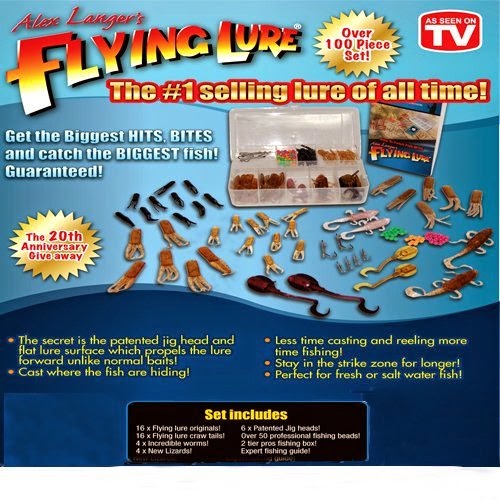 Ahhhhh... You haven't lived until you've spent a whole day bass fishing in the rain with one of those El Cheapo rainsuits. You know the kind I'm talking about. It somehow first lets a little, and then, as the day wears on, a whole lot more of the rain leak in at the neck of the suit--even getting inside your shirt collar.
Ahhhhh... You haven't lived until you've spent a whole day bass fishing in the rain with one of those El Cheapo rainsuits. You know the kind I'm talking about. It somehow first lets a little, and then, as the day wears on, a whole lot more of the rain leak in at the neck of the suit--even getting inside your shirt collar.At this point, the drops are at the mercy of gravity. They have no choice but to start running all the way down your back--to and, more times than not, inside your skivvies, all the way to your far nether regions. I mean, what die-hard bass fisherman doesn't truly love spending eight or nine hours on the water in a soaking rain, then driving home in more of the same, only to peel off all his wet clothes and find other unmentionable parts of his anatomy matching his "prune" face, fingers and feet?
Oh, I almost forgot one other little detail. Figuring that the El Cheapo was going to keep you dry, it was a no-brainer just to leave everything in your pants pockets, including, of course, your wallet. So now, you have the distinct pleasure of removing it, along with all those old, smelly, stuck-together dollar bills; credit cards; and other items and spreading 'em out to dry for a spell. That's what I call "livin'!!!"
OK, so maybe I lie a little bit, stretch the truth, or whatever else you want to call it. After all, I'm just a fisherman like the rest of you.
The truth of the matter is that, if you've been a part of this sport of ours for a while, you've no doubt figured out it pays to part with the bucks to buy at least a decent set of rain gear. Those inexpensive ponchos like you find on a discount shelf in the local market are just a waste of your time and money, especially if you wear one in a stiff wind. You'll be lucky if the poncho doesn't end up wrapped around your neck, choking you to death. Instead, look for a rainsuit with a flap-covered, zippered front, Velcro adjusters at the wrists and ankles, dry pocket flaps, and waterproof sealed seams all the way around.
And if you're a serious bass angler--one who fishes a lot, especially in foul weather--you're better off buying the absolute best rain gear available. It very well may cost you $200 or more for a top-of-the-line suit, but that sticker shock will fade quickly the first time you wear the gear on a cold, blustery day without feeling the usual effects.The best rainsuits on the market today are those that "breathe" and allow body moisture to escape, while keeping out the rain. Those made of Gore-Tex material are especially good. The lightweight but 100-percent waterproof Frogg Toggs also are a good line. Yet another preference among some serious anglers is one called Kool-Dri. It's lightweight, totally waterproof, and comes with bib-top pants.
Something else to consider is a pair of light boots to wear over your shoes anytime the temperature dips to around 45 degrees. You might even want to opt for a pair of insulated boots if the temperature drops any lower. The same considerations go for your head and hands in cold weather. The odds are that you'll fish a lot better and harder if you're comfortable.
Once you're comfortable, it becomes a matter of understanding what the weather conditions are doing to the fish. Rainy-weather days normally reduce light penetration in two ways. First, with the cloud cover, there is a reduced amount of direct sunlight. Second, the usual winds, as well as the rain itself, disturb the water's surface, diffusing and scattering much of the existing light.
Accordingly, it's relatively safe to assume the rainy-day bass are more shallow, more active, and more responsive than normal to lure presentations. Another positive result of the rainy weather is increased absorption of oxygen, as a result of the wind and rain creating surface turbulence.The rising water conditions, no matter how slight, resulting from rains also cause currents to develop and water to move, which adds oxygen. It also mixes the water and distributes the oxygen throughout.
Moving water has a very special meaning for fish--it spells food. The rains wash in small parts of the food chain from the surrounding shorelines, and larger creatures gather to feed. Bass, particularly, can be expected to gather anywhere run-off water is entering a main body--from small, normally dry gully cuts, to swollen, year-round feeder streams.
As with nearly all aspects of fishing, consistent success is a matter of applied knowledge. Understanding the positive aspects of those rainy days, coupled with physical adaptation and protection, can mean a lot of fish in the livewell, while others sit home waiting for a nicer day.




.JPG)













.JPG)



.JPG)

.JPG)






